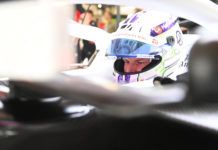The extensive Hamilton Commission report has been welcomed by both Jean Todt and Stefano Domenicali, as the F1 and FIA wishes to work together to solve the issues.
F1 chief Domenicali and FIA President Todt, have welcomed the Hamilton Commission report, which showcases the stark reality of black/minority representation in motor racing. It has highlighted the systematic gaps and also casual racism within the four walls.
Hamilton brought together a pool of people last year under a Commission, to find out the root causes of under-representation of black/minority people in motor racing. He worked in partnership with the Royal Academy of Engineering to formulate the report.
His catalyst was watching end-of-the-year F1 team photos, where the under-representation is clear to be seen. The report has some eye-opening numbers and details which does raises questions about the sport in general, along with racism troubles.
The report consist of about 180 pages and was prepared after undertaking extensive research work for about 10 months. Thousands of people were interviewed and surveyed to construct the root cause of the problem with large scale under-representation.
One of the key finding within F1 was that only one percent of Black people are part of the sport at this juncture. The element of racism is embedded and a lot of times taken as banter within the teams, whereby no one ends up asking the relevant question.
They also found about the hiring pattern which focused on few areas or universities, leaving out places where the Black/minority population is more. In terms of education as well, the opportunities are less, where many drop out because of not securing enough grades.
Amid the extensive report, the Hamilton Commission presented 10 key points which can help in better representation and solving some key issues – they are:
1. Expanded F1 and motorsport apprenticeships including exemption of salaries of new apprentice recruits from F1’s budget cap
2. An exclusion innovation fund to help address the high proportion of Black students who get excluded from school
3. Piloting new approaches to increase Black teachers in STEM subjects
4. Targeted support programmes for post-16 education to enable greater progression into Higher Education courses and training opportunities
5. Scholarship programmes to enable graduates to progress into specialist motorsport roles
6. Creation of a diversity and inclusion charter
7. Widespread adoption of National Education Union Anti-Racism Charter for schools
8. Department of Education and other bodies holding education data to enable easier public access to disaggregated data on student and staff characteristics at subject level
9. Development of best practice guidelines for STEM inspiration and outreach activities
10. Additional STEM activity support to supplementary schools led by Black community groups
F1 chief Domenicali was impressed with the extensive report brought out by Hamilton Commission. They are now onto the understand the shortcomings and take appropriate actions to improve the situation for the future generations to come.
“The Hamilton Commission has delivered a comprehensive and impressive report that shows the passion Lewis has for this very important issue,” said Domenicali. “We will take the time to read and reflect on all of the findings, but we completely agree that we need to increase diversity across the sport and we have taken action to address this and will be announcing more actions in the coming days.
“We want a sport that is representative of our hugely diverse fan base and that is why Formula 1, the FIA and all the teams are working hard to deliver on our detailed plans to create positive change across the sport. There is always more to do and the report will stimulate thoughts about further actions that are required.”
At the same time, FIA President, Todt, added: Diversity and Inclusion are two of the key issues that the FIA, through its Statutes, Code of Ethics and the #PurposeDriven movement, is fully committed to addressing. I commend Lewis Hamilton and the Hamilton Commission for its extensive report.
“Lewis’ pursuit of excellence continues to inspire young people around the world. The FIA welcomes his leadership, and the deep analysis contained in the report which will be studied carefully in the coming days. The collaboration among FIA, F1, the teams and the Hamilton Commission, on the need to fight racism reflects a collective commitment to create a more diverse and inclusive culture across motor sport.”
Here’s what Hamilton penned in the report: “Stevenage, 1990. I was five years old when my dad bought me my first radio-controlled car. I spent every Saturday and Sunday racing, determined to beat everyone across the finish line. I was obsessed with the thrill of racing, but really I was obsessed with how much I could improve and how good I could get.
“Six years later, I started secondary school and was placed in the lowest level set for every subject. No matter how hard I worked, I was told I wasn’t smart enough, that I had no potential, no future. Eventually, I was expelled for something I didn’t do, a grand finale to the years I spent in the headmaster’s office for alleged misbehaviour. My mental health plummeted and I began to believe what I had been told, and that I didn’t have potential.
“I was convinced I’d be dropped by the McLaren Mercedes Driver Programme and denied my dreams of being a racing driver. At the time of releasing this report, I’m a Seven-Time World Champion, holding the highest number of wins, poles, and podium finishes in the world of Formula One. While these two people may seem worlds apart, they’re not. The one thing that connects the boy who was told he had no potential in 1996, with me today, is opportunity. I am the same boy who got kicked out of that classroom.
“I am the same boy who got told he’d never achieve anything. I, like so many other Black students, lost my confidence in school and struggled to see a future where I could be successful. But like any other child, I was born with potential. It was the system that failed me and almost destroyed my sense of confidence and any dream of living to my full potential. Looking back, it’s all so clear to me. Why would I believe in myself, if my school never believed in me? The answer for me, was my dad.
“It was his belief in me, and his insistence that I follow my dreams, that led me to where I am today. Turns out, he was right. I did have potential and the determination to succeed. Joining F1 was my absolute dream come true. Since then, I’ve won over 90 F1 races and travelled the world. I’ve loved my career in racing, but it has been a lonely one. While there are no Black drivers, there also remain few Black people in Formula 1 and the wider industry. But why? There are seven F1 teams in the UK, and over 4,000 companies. That’s a lot of jobs, from drivers to engineers, managers to accountants. There are suppliers and sponsors who hire thousands of people a year.
“If there are so many jobs, and so many different paths in this industry, why do we see so few Black people? The answer is, our industry is set-up to attract a certain type of person, from a certain background and a certain economic status. It seems as if our industry says “no, not you”. And in our wider society it seems that, all too often, kids like me get told they’re not good enough, don’t get to see their potential, don’t think they can achieve their dreams. Now, 15 years after I first joined F1, it’s clear my success has not been enough to inspire a change, as I hoped it might.
“I remember year after year, looking at our end-of-year team photos and feeling so disheartened by the lack of representation. I don’t feel that way anymore. Instead, I feel inspired. In 2019, I realised I couldn’t wait anymore, and I could do something. But, you can’t demand a change without knowing what the problem was. This is how the idea of The Hamilton Commission was born. Our Commission, in partnership with the Royal Academy of Engineering, has worked hard to understand the barriers facing Black students at every step of their educational journey, and developed clear recommendations with tangible steps that we hope will encourage more of the Black community to pursue a career in STEM.
“My sport is a pretty fantastic discipline. I’m sure you’re not surprised to hear me say that. But really, motorsport is an amazing opportunity to show marginalised communities how an education in STEM can lead them onto so many paths. It makes science cool. By introducing underrepresented kids to the vast number of opportunities within our industry, we can inspire these young students to explore a future in STEM. While our report focuses on motorsport, it uses the industry as a lens through which to explore institutional issues across our society that prevent Black youth from achieving their highest potential.
“These can range from how our schools place Black students into lower ability groups to how they hire so few Black teachers. It is clear these patterns of discrimination against Black students begin at a young age and can follow them to their future workplaces. Through The Hamilton Commission, we’ve developed a comprehensive summary of the systemic issues preventing young Black people from pursuing careers in STEM. Our team focused on evidence, and ensured every claim was followed up with facts and interviews.
“We’ve invested in accuracy to ensure our data represents the experiences of minority students, young people and motorsport employees. We had to be focussed in our approach, and specifically researched the Black community, which is personal to me but also because we shouldn’t assume the same barriers affect the same groups. That said, our hope is that where possible, this research will be useful and replicable amongst other underrepresented groups and, hopefully, other industries.
“Through our Commission, we make ten recommendations which relate to shifting change within motorsport, maximising early-stage opportunities for Black youth and providing additional careers education support to those who need it most. We know there is so much that needs to change when it comes to racial equality, but it’s impossible to tackle everything at once. Instead, we carefully chose these recommendations to ensure we have a focussed approach and, more importantly, recommendations that I can take responsibility for taking forward.
“We have always been set on being a ‘Commission of Action’, not just ideas, and so alongside my foundation and my joint initiative with Mercedes, we have also received support from a range of organisations to follow through on the recommendations, turning them into action. The recommendations will vary in timescale but it’s exciting that we can commit to tangible progress. This report may mark the end of our ten-month research, but it is the beginning of a different phase, where our research and insights can help make motorsport a more diverse and equitable industry. We always had the dream of helping to enact change in this industry. We always had the passion, the focus.
“All we needed was to know the facts. I would like to thank everyone who contributed to the report across all the different stages. Thank you to the Royal Academy of Engineering and our incredible Board of Commissioners for their hard work and commitment to this project. I’d also like to give a special thanks to my co-Chair, Dr Hayaatun Sillem, who I feel so honoured to work alongside on this project.
“I couldn’t be more inspired by this team that combines some of the brightest minds in academia, engineering, diversity and inclusion, motorsport and politics. Each member has brought their own passion, experience and insights to this project and it’s clear that together, we have all we need to reimagine the future of the UK motorsport industry. Thank you all so much. This has truly been one of the most fulfilling milestones in my entire career.”
Here’s the full report: https://static1.squarespace.com/static/5f29736c8982c82f61df71e0/t/60ecad1b0f7d8d50062fc813/1626123558966/THC+Accelerating+Change+July+2021.pdf
Here’s the interactive summary: https://report.hamiltoncommission.org/interactive-summary/index.html
Here’s Lewis Hamilton on if he races beyond the current deal
Here’s Lewis Hamilton on how the deal was signed



















